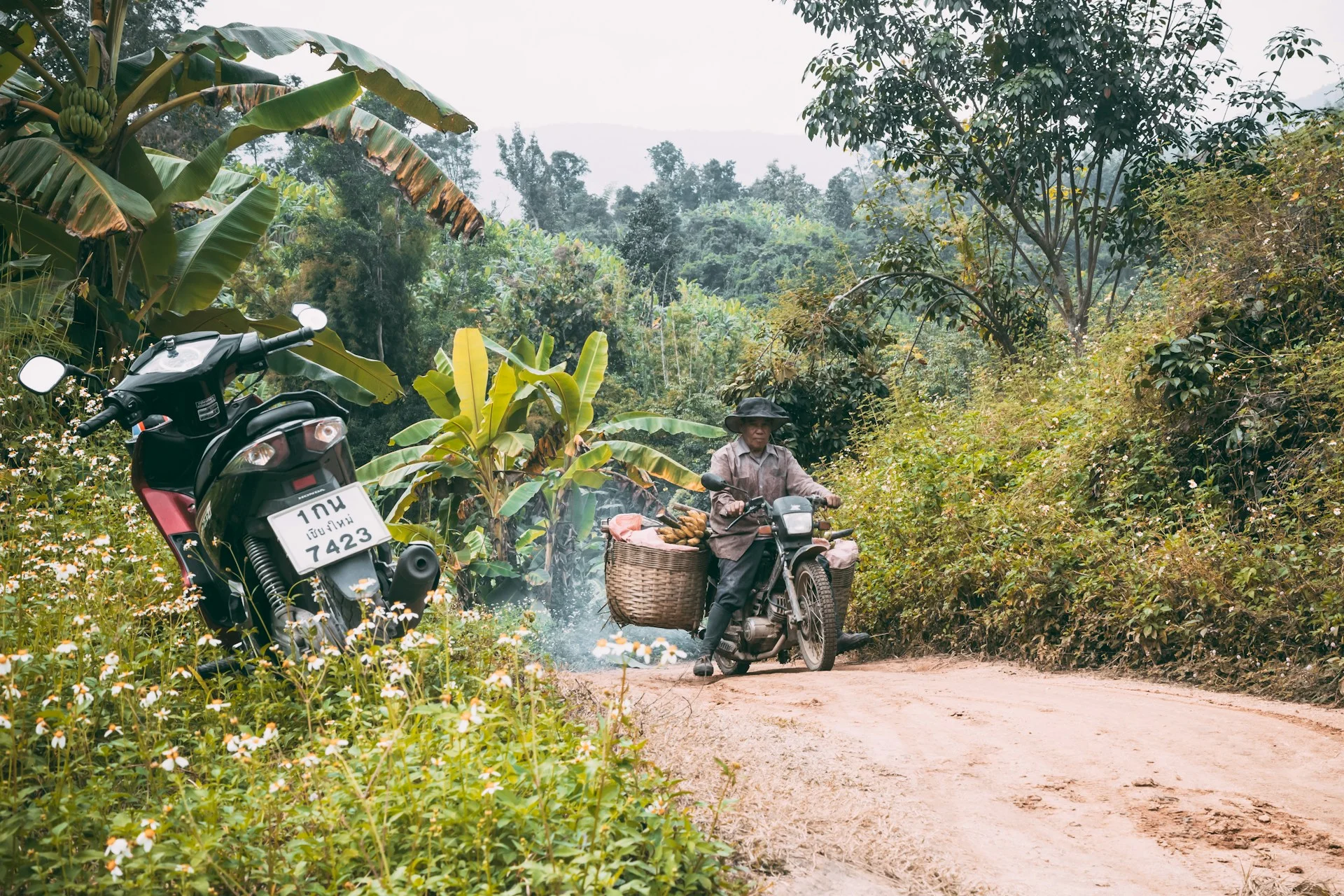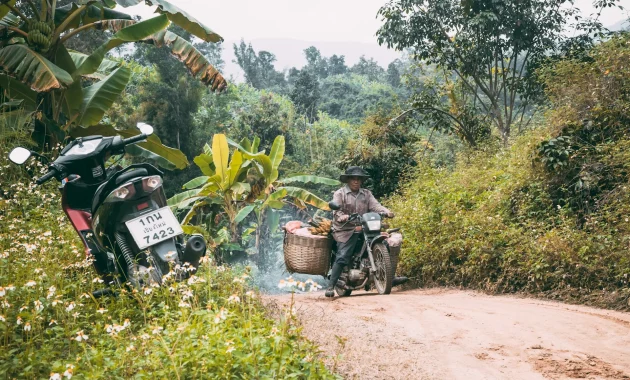
The Historical Roots of Pai’s Culture
Pai’s rich cultural diversity can be traced back to its historical roots. Originally inhabited by the Shan people (also known as the Tai Yai), who migrated from Myanmar, Pai has always been a hub of cultural exchange. The town’s location along ancient trade routes allowed for the mixing of Thai, Burmese, and Chinese traditions, giving rise to a multi-ethnic identity that continues to thrive today.
The Shan people, with their distinct language, architecture, and religious practices, still play a significant role in shaping Pai’s cultural landscape. Many of the temples in Pai, such as Wat Nam Hoo and Wat Phra That Mae Yen, showcase Shan-influenced designs with ornate carvings and sweeping roofs. Visitors to these temples can witness the seamless fusion of local and foreign elements that define the town’s cultural identity.
The Influence of Migrant Communities on Pai’s Culture
In recent decades, Pai has experienced a surge in migration, particularly from Western expats and digital nomads. This influx of foreign residents has had a profound impact on the town’s cultural fabric. Cafes serving Western cuisine, yoga studios, and art galleries now sit alongside traditional Thai eateries and markets. This cultural fusion has created a unique atmosphere where locals and foreigners coexist harmoniously, each bringing their own customs, art forms, and traditions to the table.
The town’s expat community has contributed to the growth of alternative lifestyles in Pai, with practices such as meditation, holistic healing, and sustainable living becoming increasingly popular. The integration of these modern influences with Pai’s traditional roots has resulted in a community that is both cosmopolitan and deeply connected to its cultural heritage.
Traditional Thai Practices Preserved in Pai
Despite the influx of foreign influences, traditional Thai customs remain deeply ingrained in Pai’s daily life. The town’s residents continue to observe important Thai holidays, such as Songkran (Thai New Year) and Loy Krathong (Festival of Lights), with elaborate ceremonies and celebrations. These events offer visitors a glimpse into the rich tapestry of Thai cultural practices that have been passed down through generations.
One of the most striking examples of Pai’s commitment to preserving its traditional heritage is the Pai Walking Street. This bustling night market is a microcosm of the town’s cultural diversity, where visitors can sample local Thai street food, shop for handmade crafts, and enjoy live performances by both Thai and foreign musicians. The market serves as a meeting point for people from all walks of life, offering an authentic experience of Pai’s cultural coexistence.
The Role of Art and Music in Pai’s Cultural Landscape
Art and music play a central role in Pai’s cultural identity, with the town’s bohemian spirit attracting artists and musicians from all over the world. Pai has become a haven for creatives who are drawn to its laid-back vibe and natural beauty. The town’s art scene is a reflection of its cultural fusion, with local artisans creating works that blend traditional Thai techniques with modern, international influences.
Music is another integral part of Pai’s cultural life. The town is home to numerous live music venues, where both Thai and foreign musicians perform nightly. From traditional Thai folk music to reggae and jazz, the eclectic music scene in Pai is a testament to the town’s open-mindedness and embrace of different cultures.
The Spiritual Side of Pai: A Hub for Mindfulness and Wellness
Pai has gained a reputation as a spiritual retreat, attracting those seeking peace, mindfulness, and holistic wellness. The town’s tranquil surroundings, combined with its rich cultural heritage, make it an ideal location for spiritual practices such as meditation, yoga, and Vipassana retreats. Numerous retreat centers have sprung up in Pai, offering visitors the opportunity to engage in wellness practices that draw from both traditional Thai beliefs and modern holistic approaches.
The emphasis on spirituality and mindfulness in Pai is closely linked to its Buddhist roots. Many of the town’s temples offer meditation sessions, and visitors are encouraged to participate in the daily rituals that form an essential part of life in Pai. This spiritual dimension adds another layer of depth to Pai’s cultural landscape, making it a destination not just for cultural exploration but also for personal growth and healing.
The Culinary Fusion in Pai: A Taste of Diversity
Pai’s culinary scene is a reflection of its cultural diversity, with an array of flavors that represent both local Thai traditions and international influences. While traditional Thai dishes like pad thai, som tam (papaya salad), and khao soi (a northern Thai curry noodle soup) are readily available, the town is also home to numerous restaurants serving Western, Middle Eastern, and vegan cuisine.
This blend of culinary traditions is particularly evident in Pai’s many fusion cafes, where travelers can enjoy Thai-Western fusion dishes such as green curry pizza or mango sticky rice pancakes. The town’s food scene is a testament to the harmonious coexistence of different cultures, offering visitors a chance to sample the best of both worlds.

Cultural Festivals in Pai: Celebrating Diversity
Pai’s cultural calendar is filled with festivals that celebrate its diverse heritage. In addition to traditional Thai festivals like Songkran and Loy Krathong, Pai hosts several events that reflect its multicultural community. The Pai Jazz & Blues Festival is one such example, where musicians from Thailand and abroad come together to perform in a celebration of musical diversity.
Other cultural events, such as art exhibitions, film screenings, and cultural workshops, provide visitors with opportunities to engage with Pai’s rich cultural landscape. These festivals not only showcase the town’s artistic talents but also highlight the spirit of collaboration and cultural exchange that defines Pai.
Conclusion: Pai as a Model of Cultural Harmony
In conclusion, Pai’s unique blend of local and migrant traditions has created a cultural landscape that is both diverse and harmonious. The town’s ability to integrate influences from around the world while preserving its traditional Thai roots makes it a fascinating destination for those seeking a deeper understanding of cultural coexistence.
Whether through its art, music, festivals, or culinary traditions, Pai offers visitors an authentic and enriching cultural experience. The town stands as a testament to the power of cultural fusion, where different traditions and practices come together to form something entirely new and beautiful.